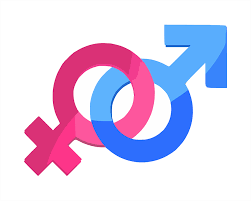Exploring the Complexities of Sex and Gender

Sex and gender are two fundamental concepts central to discussions surrounding identity, society, and culture for centuries. While often used interchangeably, they represent distinct aspects of human experience. Sex typically refers to the biological characteristics distinguishing males from females, primarily related to reproductive anatomy and genetics. On the other hand, gender encompasses the behaviors, roles, identities, and expectations that societies construct around masculinity and femininity. This essay explores the intricate relationship between sex and gender, highlighting their complexities, the influence of culture and social norms, and the ongoing discourse around their definitions.
Biological Basis of Sex
Sex, as traditionally understood, is rooted in biological factors such as chromosomal makeup, reproductive anatomy, and hormonal composition. The most common classification of sex is binary – male and female – based on the presence of either XX or XY chromosomes. This binary perspective, however, fails to capture the full diversity of human biology. Intersex individuals with variations in reproductive or sexual anatomy that don’t fit typical definitions of male or female challenge the notion of a strict sex binary.
Additionally, the understanding of sex has evolved beyond chromosomes alone. Research has shown that hormonal influences and genetic variations can lead to various phenotypic differences, blurring the boundaries between male and female characteristics. This realization highlights the complexity of biological sex and the limitations of inflexible categorizations.
The Societal Construction of Gender
Gender, unlike sex, is a social construct encompassing the roles, behaviors, and identities that societies attribute to individuals based on their perceived sex. These gender norms vary across cultures and historical periods, illustrating the malleable nature of gender roles. Organizations frequently assign explicit behaviors, occupations, and expectations to individuals based on their perceived gender, creating masculine and feminine identities.
However, the dichotomy between masculinity and femininity is not universal. Many cultures recognize non-binary or genderqueer identities that do not conform to the traditional male-female binary. The hijra community in South Asia and the Two-Spirit concept in some Indigenous cultures are examples of gender identities that challenge Western notions of gender. This diversity underscores the idea that gender is not an inherent truth but a fluid and contextualized construct.
The Interplay between Sex and Gender
The interplay between sex and gender is complex and multifaceted. While traditional perspectives frequently link biological sex to gender identity and roles, contemporary understanding acknowledges that they are not strictly deterministic. Gender identity is an individual’s deeply-held sense of gender, which might or might not align with their assigned sex at birth. Transgender individuals, for instance, experience a disconnection between their gender identity and the sex they were set. This disconnection highlights the intricate nature of the relationship between sex and gender.
Moreover, the interplay between sex and gender is influenced by environment, culture, and personal experiences. Society’s expectations of how individuals should perform their gender roles can lead to disparities in access to opportunities, healthcare, and education. For occurrence, the gender pay gap, which reflects differential earnings between men and women, is a consequence of societal norms and stereotypes rather than inherent biological differences.
Challenging Norms and Moving Towards Equality
In recent decades, there has been a growing recognition of the limitations and harmful consequences of firmly adhering to traditional sex and gender norms. Movements advocating for gender equality and LGBTQ+ rights have challenged these norms and promoted inclusivity and acceptance of diverse gender identities and expressions.
Legally, many countries have taken steps to protect the rights of transgender and non-binary individuals. Legal recognition of gender identity, access to gender-affirming healthcare, and the right to change one’s gender marker on official documents are some of the advancements that acknowledge the autonomy of individuals over their own gender identity.
However, progress is not uniform globally, and many challenges persist. Discrimination, violence, and stigmatization against transgender and gender-diverse individuals continue to be pervasive in innumerable societies. The tension between traditional gender norms and the push for greater inclusivity often leads to complex debates around access to public facilities, sports participation, and military service.
Conclusion
The concepts of sex and gender are deeply intertwined yet distinct, representing the intricate interplay between biology, society, and identity. Biological sex, once considered a simple binary, is now recognized as a complex spectrum with variations extending beyond chromosomes. Gender, as a social construct, reflects the roles and identities societies assign to individuals based on their perceived sex, but this construct is far from uniform across cultures and history.
The relationship between sex and gender is not deterministic, as demonstrated by the experiences of transgender individuals whose gender identity does not align with their assigned sex. The push for gender equality and LGBTQ+ rights has challenged traditional norms, leading to legal and societal changes recognizing and protecting diverse gender identities.
As society continues to evolve, discussions around sex and gender will remain at the forefront of cultural, political, and scientific discourse. The ongoing dialogue encourages us to question assumptions, challenge prejudices, and work towards a more inclusive world where individuals are free to express their authentic selves, regardless of the constraints of traditional norms.
References:
Nelson, K. and Fernandez, N.T. (n.d.). Chapter 1: Key Concepts. milnepublishing.geneseo.edu. [online] Available at: https://milnepublishing.geneseo.edu/genderedlives/chapter/chapter-1-key-concepts/
Psych Central. (2022). Sex vs. Gender: What’s the Difference and Why Does it Matter? [online] Available at: https://psychcentral.com/health/sex-vs-gender.
University of Minnesota (2016). 11.1 Understanding Sex and Gender. [online] Umn.edu. Available at: https://open.lib.umn.edu/sociology/chapter/11-1-understanding-sex-and-gender/.





